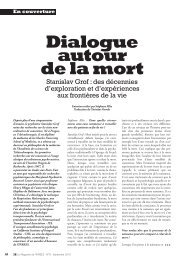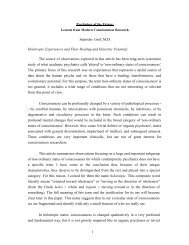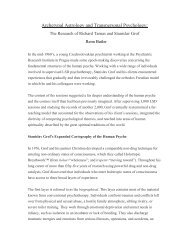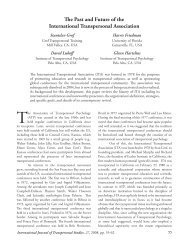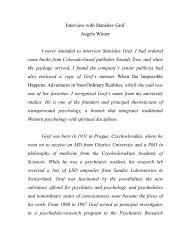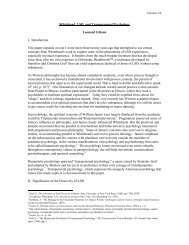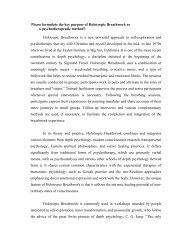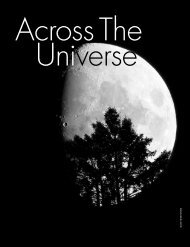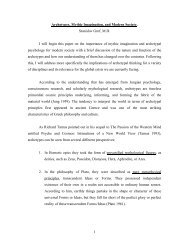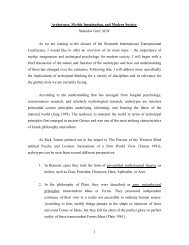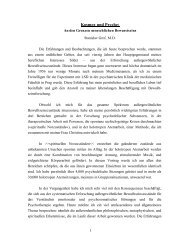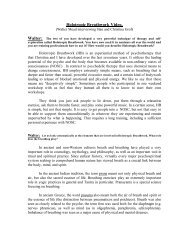1 PSYCHOSIS AND HUMAN SOCIETY: A Historical ... - Stanislav Grof
1 PSYCHOSIS AND HUMAN SOCIETY: A Historical ... - Stanislav Grof
1 PSYCHOSIS AND HUMAN SOCIETY: A Historical ... - Stanislav Grof
Create successful ePaper yourself
Turn your PDF publications into a flip-book with our unique Google optimized e-Paper software.
psychoses among the relatives of psychotic patients, which is a fact open to various<br />
interpretations, no findings have been sufficiently constant to provide adequate<br />
etiological clues. The successes of unraveling the causes of serious mental disorders have<br />
been isolated and limited to a very small fraction of the problems that psychiatry deals<br />
with. The causes of the majority of psychotic episodes continues to be a mystery. With<br />
the privilege of hindsight, we can say that it was somewhat premature to commit<br />
psychiatry so exclusively to the medical model, particularly since this development has<br />
not been without serious problems.<br />
The failure of the biological approaches to demonstrate the organic nature of most<br />
psychotic states and of many other emotional and psychosomatic disorders encouraged<br />
the development of psychological schools of psychiatry. These have been exploring the<br />
possibility that the origin of such disturbances might be in the patients' life history and in<br />
various emotional traumas and conflicts. For all practical purposes, this avenue of<br />
research began with the epochal discoveries of Sigmund Freud and his disciples. Freud<br />
him-self made the first major attempt at psychological understanding of psychoses in his<br />
famous analysis of the autobiographical diary of judge Schreber who had suffered from<br />
paranoia.<br />
Freud's followers, such as Karl Abraham, Victor Tausk, Melanie Klein, and others<br />
developed systematically Freud's original idea that psychotic experiences represent a<br />
regression into early infancy and emergence of repressed traumatic memories and<br />
conflicts from that time. In addition to psychoanalytic theories, that interpret the<br />
problems of psychotics in terms of conflicts within the psyche, there have been others<br />
emphasizing the role of the interpersonal relationship with the mother and other family<br />
members in the genesis of mental disorders. The extensive studies on "schizophrenogenic<br />
mothers" and Harry Stack Sullivan's interpersonal theory can be mentioned here as<br />
salient examples.<br />
Considerable attention was also paid to the overall climate in the family. In this<br />
context, the entire family system was seen as pathological and the psychotic was just the<br />
"identified patient" (IP), the person in whom the problems found the most dramatic<br />
expression. This approach was particularly characteristic for the research group at the<br />
Mental Research Institute (MRI) in Palo Alto, California, headed by generalist Gregory<br />
Bateson, author of the famous "double bind" theory of schizophrenia. Ruth and Theodore<br />
Lidz at Yale University conducted a meticulous in-depth study of all the members of<br />
14




